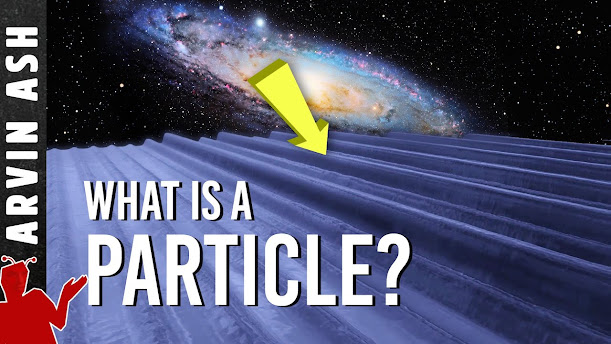Ask 10 physicists what a particle is: you’ll get 10 different answers. Quantum mechanics showed via the Schrodinger equation, that quantum objects are not particles but waves smeared out in space, until the moment we measure it. They are described by a mathematical term called a wave-function. It doesn’t tell us where a particle is, but only the probability of where it might be if we measured it.
Is a particle a collapsed wave function? Maybe, but this is not a good description because we don’t know what wave function collapse means. Quantum mechanics shows that photons are a wave packet. This wave packet can be looked at as a kind of particle. Something similar can be done for describing other particles too.
The Schrodinger equation does not work when objects travel close to the speed of light. It does not account for special relativity. In the 1930’s scientists like Dirac found a modification that was compatible with special relativity. This led to quantum field theory, or QFT.
In quantum field theory, what we call particles are quantized waves in a field that spreads throughout spacetime. The idea of quantized fields was a necessary step in order to describe objects like photons and other fast moving objects that need to be treated according to special relativity. QFT is nothing but a theoretical framework that unites ideas from classical fields, special relativity and quantum mechanics.
The idea is this: you start with a field or analogously picture yourself a calm sea that stretches throughout all of spacetime. This is an empty field without any particles. Now imagine that there is a wave in the sea, this is a particle in our field. There is however at least one difference between the quantum field and our ocean, our ocean is not quantum.
For our ocean field to be quantum we have two requirements. First, the waves in our sea must have some discrete magnitude. This can be represented by the amplitude or height of the wave, like 1 meter, 2 meters, 3 meters and so on, nothing in between. Each meter corresponds to the number of particles in any one place. The second requirement is that there has to be some minimum energy state at all times. So we will say that the 1-meter waves represent this minimum energy state. This is called the vacuum energy. I
Then each extra meter of amplitude or height is a real particle. We can only create taller waves in increments of whole meters. The minimum aplitude is 1-meter waves. Each extra meter is then a real particle. But we can only create these taller waves if we have enough energy to reach the next meter. If there is not enough energy to reach at least 2 meters, no taller wave is created.
These one meter waves are from the quantum vacuum, they represent the non-empty minimal state. These quantum waves slosh around and, in some places, there might momentarily be enough energy to create a larger 2-meter wave or a particle. But then almost just as quickly as it’s formed, the particle vanishes again in the sea of fluctuations. These are analogous to virtual particles that come in and out of existence all around us, but are undetectable because they last for too short a time.
The quantum field is like the sea – it is the background on which waves appear and disappear. And just like energy can create waves in the sea, energy added to the field generates particles which we can observe.
If you expand this concept to other particles, we have to imagine other seas representing a different field for each fundamental particle that we know of, so there would be a sea representing the field for electrons, field for photons, field for quarks, etc.
What does “fundamental” in the word fundamental particles mean? It means that the particles of the standard model are the smallest particles from which we can construct the world around us. There is nothing, that we know of that is smaller that these fundamental particles are made of.
As of now, the best description for a particle would be something like this:
A fundamental particle is an excitation in a quantum field that is constantly in flux. There are at least as many fields as there are particles in the standard model. Each particle can propagate in its field. The interactions of these fields and exchange of energy results in particle creation and annihilation. In the end, you should remember that this is just all math.

